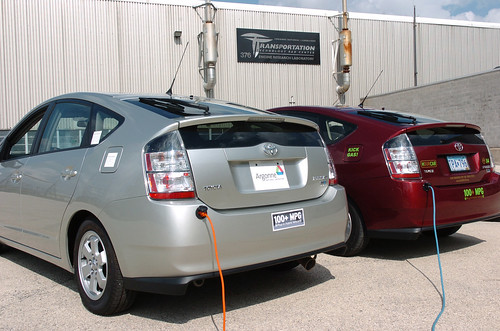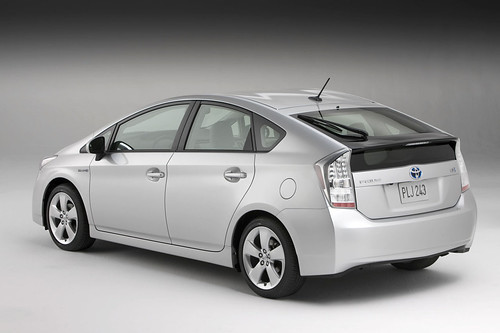(Source: TOLLROADSnews.com)
Japanese tollroads have put into effect discounted tolls under a huge subsidy program from the central government. The discounts came into effect on bridges March 22 and on most expressways March 28. The discounted tolls were a centerpiece of an economic ‘stimulus package’ prime minister Taro Aso announced last October.
 The traffic stimulus measure is touted as helping revive highway travel which is down about 4%, and to revive associated spending on gasoline and diesel fuels, car service, hotels, new cars and electronics. However it is also obviously influenced by lobbying and PM Aso’s desire for public acclaim.
The traffic stimulus measure is touted as helping revive highway travel which is down about 4%, and to revive associated spending on gasoline and diesel fuels, car service, hotels, new cars and electronics. However it is also obviously influenced by lobbying and PM Aso’s desire for public acclaim.
The measure announced as lasting two years and Y500b ($5b) has been set aside in a supplementary Japanese Government budget, but the subsidy program may end up costing a whole lot more. Meanwhile airline and rail interests complain the measure will take customers away from them.
The most spectacular discounts come on the interurban ticket or trip-based toll system run by the three regional expressway companies. Here a maximum toll of Y1000 ($10) is now in effect weekends and holidays for vehicles equipped with a transponder. This greatly encourages long trips by car.
Shinkansen or ‘bullet train’ bookings are expected to drop away.
Tokyo to northern Honshu, for example, a distance of over 400 miles (700km) normally costs about Y14k ($140) for a car but will be tolled the new maximum Y1000 toll or $10 at weekends. There are also major savings on a popular interurban run between Tokyo and Nagoya of 325km (200 miles) on the Tomei Expressway. It usually costs Y7100 ($71) in tolls so there’s a saving of Y6100 ($61) or 86%.
On many urban expressways with a single barrier toll on entry the toll is being reduced from Y700 ($7) or Y800 ($8) to Y500 ($5). Under the crude toll-on-entry ramp the toll paid is already a flat rate regardless of distance traveled.
The government’s aim in paying for the toll discounts is apparently to generate more travel when roads are relatively uncongested.
 The discounts range in size. Some Tokyo metro area tolls are only discounted at night 10pm to 6am, some Sundays and holidays.
The discounts range in size. Some Tokyo metro area tolls are only discounted at night 10pm to 6am, some Sundays and holidays.
On Sundays and holidays, the Tokyo Metropolitan Expressway will charge Y500 ($5) on several Tokyo routes, down from the current Y700 ($7). The toll on its Kanagawa ‘lines’ will be cut to Y400 ($4) from Y600 ($6), while on the Saitama line will be reduced to Y300 ($3) from Y400 ($4).
Tolls on the Hanshin Expressway in the Osaka region will be discounted on full weekends and national holidays. Hanshin’s east lines will be Y500 ($5) from the current Y700 ($7), and the west and south lines will be Y350 ($3.50) from Y500 ($5).
In April there will be more discounts in the form of credits for tolls paid on other systems for long journeys through multiple toll companies roads.
Click here to read the entire article.









![Spain's system of 218-mile-an-hour bullet trains, the AVE[mdash ]meaning 'bird' in Spanish[mdash ]has increased mobility for many residents, though critics say it has come at the expense of less-glamorous forms of transportation.](http://s.wsj.net/public/resources/images/NA-AX208_FASTRA_G_20090419183055.jpg)
 The traffic stimulus measure is touted as helping revive highway travel which is down about 4%, and to revive associated spending on gasoline and diesel fuels, car service, hotels, new cars and electronics. However it is also obviously influenced by lobbying and PM Aso’s desire for public acclaim.
The traffic stimulus measure is touted as helping revive highway travel which is down about 4%, and to revive associated spending on gasoline and diesel fuels, car service, hotels, new cars and electronics. However it is also obviously influenced by lobbying and PM Aso’s desire for public acclaim. 
 The discounts range in size. Some Tokyo metro area tolls are only discounted at night 10pm to 6am, some Sundays and holidays.
The discounts range in size. Some Tokyo metro area tolls are only discounted at night 10pm to 6am, some Sundays and holidays.